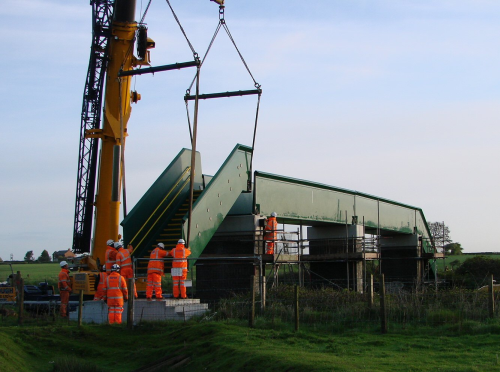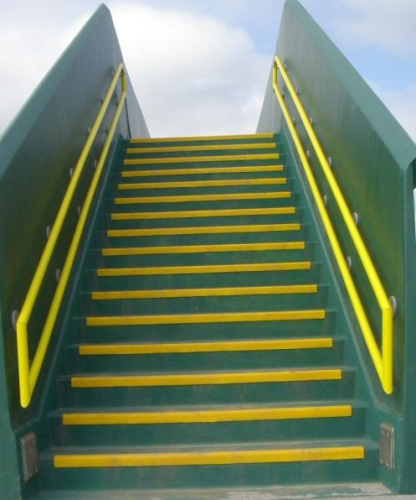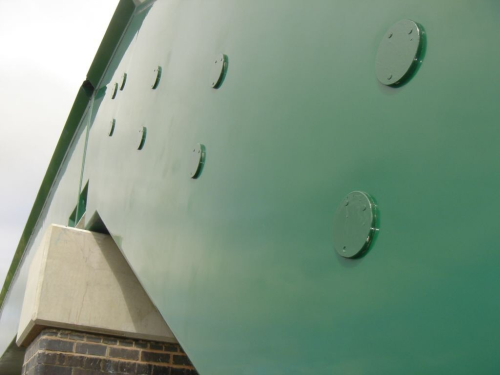


At six tonnes the composite railway bridge is significantly lighter than the metallic structure (20 tonnes) that it replaces. The reduction in weight was a significant factor in the speed of installation.
The new composite bridge is designed to last in excess of 60 years and during this time maintenance should be restricted to the replacement of non-slip finishes and stair noses.
The bridge was manufactured by UK composite structures company AM Structures (AMS) for Network Rail, the owner of Britain's rail infrastructure, and engineered by consulting firm WYG. It comprises of two 12 m spans and two flights of steps. Both the bridge spans and steps were produced using Gurit’s SPRINT composite system over a foam core.
The SPRINT fire retardant woven glass/epoxy composite skins are approximately 2.5 mm thick whereas the core varies from 40 mm of 55 kg/m3 foam at the top of the bridge parapets to 100 mm of 100 kg/m3 foam on the walkway. To provide a ‘paint-free’ finish a polyester gel-coat and a vinyl ester tie coat was used. Gurit’s Spabond 340LV and Ampreg 22 were used for secondary bonding operations.
SPRINT composite materials comprise a layer of fibre reinforcement on either side of a precast resin film with a light tack film on one face. Unlike conventional prepregs, with SPRINT the fibres remain dry and unimpregnated by the resin until the curing process takes place following the application of a vacuum bag. Gurit maintains that this approach gives the materials excellent breathability and allows ‘autoclave quality’ laminates to be achieved. For example Gurit claims that the void content of a SPRINT composite laminate is comparable with autoclaved prepreg (less than 1%). Moreover the company states that for large structures, such as bridges, autoclave processing would be prohibitively expensive if not impossible to undertake.
Although this was a one-off project, the tools were manufactured from composite materials to allow further bridges of varying spans to be manufactured in the future. AMS and Gurit are now working together to offer a modular bridge concept that will enable composite bridges to be supplied at a lower first cost than equivalent steel bridges.






